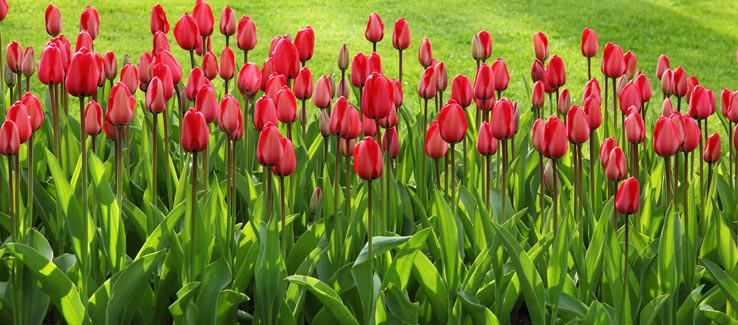10 Summer Gardening Tips
Summer brings with it an explosion of plant, animal, and insect life. It is the time when our efforts in the garden become most evident and the time we must pay the closest attention to it.
From watering to fertilizing and from pruning to deadheading, the team at Fast Tree Removal Services Atlanta has compiled 10 tips to help you turn your garden into a beautiful showcase of your efforts.
Tips for a Successful Summer Garden
The following tips will help you achieve a brighter, healthier, and more beautiful garden throughout the summer months.
1. Watering in Summer Months – As the weather heats up, your garden is going to need more water. Here’s how to accomplish this:
- Water in the evening or early morning.
- Water slowly using a soaker hose or a dripline with a bucket (holes at the bottom of the bucket release water slowly through hoses or tubes). This is called deep watering and will encourage all roots to thicken and grow deeper.
- Plan on watering at least once per week, and in drier locations, two or three times per week.
- Avoid overwatering. When the top two inches of soil remains moist, postpone the watering for a day or two. Browning of the foliage and root rot can occur from overwatering.
Watch this video to learn how to assemble a dripline using a standard bucket.
2. Soil Preparation for Plant Growth – Preparing your garden’s soil will be greatly influenced by what you intend to plant or already have planted. The following will help you enrich and balance your soil:
- Start with dry soil (trying to turn wet or moist soil will make a big mess). Turn the top 6-8 inches while adding well-decomposed manure or finished compost.
- Remove rocks and break up large clods.
- When you run into roots, know where they are coming from. Cutting through tree roots may leave the tree susceptible to disease and infestation, potentially causing serious problems for the garden. More often than not, the mycelia that surround and colonizes tree roots will do the same to plant roots, creating a beneficial ecosystem for them to coexist.
- Check the pH level of the soil. Levels range from 0 to 14 with 7 being neutral, below 7 is acidic and above 7 is alkaline. Most plants will thrive when the pH level is between 5.5 and 7. The addition of limestone will raise the pH level, while compost and organic materials will work to lower it.
Watch this video to learn different methods of measuring your soil’s pH level.
3. Weed the Garden to Remove Competing Roots – While diversity in a garden is important, weeds cause more problems than they are worth. Here’s how to get rid of them without the use of chemicals.
- Use a spade or garden rake to loosen the soil around undesired growth. Pull the weed and as much of the roots as possible to prevent regrowth.
- Dispose of or destroy these plants away from the garden and compost pile.
- Any time you see something that shouldn’t be there, remove it. Weeds grow fast and can rapidly take over a section of your garden if left unchecked.
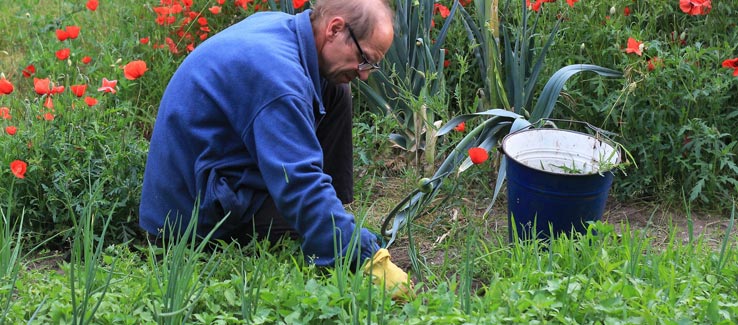
4. Planting for Optimized Growth – Know the species of plants and shrubs in your garden and how much light they need.
The location of your garden with respect to physical structures, shrubs, and trees will determine the amount of direct sunlight it receives. The following are the categories playing a part in the growth and health of your garden:
- Full Sun – six hours per day,
- Partial Sun/Partial Shade – three hours per day,
- Shade – less than two hours of sunlight per day, and
- Indirect Light – bright light without direct sunlight,
Knowing this factor will help you select the right plant species for your garden. Plants sold in nurseries, garden centers, or even seed packets will have the recommended sunlight exposure printed on the label.
5. Planting Vegetables – If you have a large, spacious garden, vegetables would make a great summer addition to it. The warmth of the soil and air along with intense sunlight facilitate their rapid growth. Some great examples are:
- Tomatoes
- Beans
- Corn
- Squash
- Peppers
- Celery
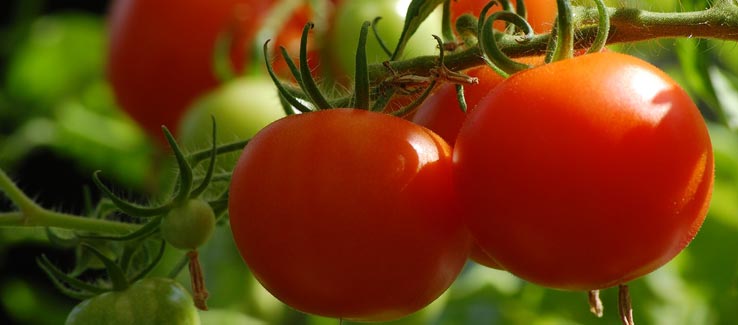
Take a look at this vegetable planting calendar by the University of Georgia for the state of Georgia.
6. Fertilize Your Garden to Encourage Growth – If you have properly prepared your soil with organic material, your plants may not need to be fertilized. For heavy feeding vegetables like corn and tomatoes. However, a slow release nitrogen-rich inorganic fertilizer should be worked into the soil just before they are planted.
- Inorganic fertilizers deliver immediate nutrients and promote faster growth.
- Organic fertilizers release nutrients at a much slower pace but produce healthier soil.
7. Mulch to Protect the Soil and Roots – Mulch works for gardens the same way it does for trees. The addition of a layer of organic mulch to your garden provides the following benefits:
- The soil will retain more moisture.
- Mulch naturally balances soil temperatures, preventing overheating and excessive drying.
- As the mulch decomposes, nutrients and nitrogen are released into the soil.
- For both annual and perennial gardens, old mulch should be removed and replaced with new mulch each spring. This prevents rot from occurring and continues the delivery of nutrients to the soil. Avoid layering mulch on mulch.
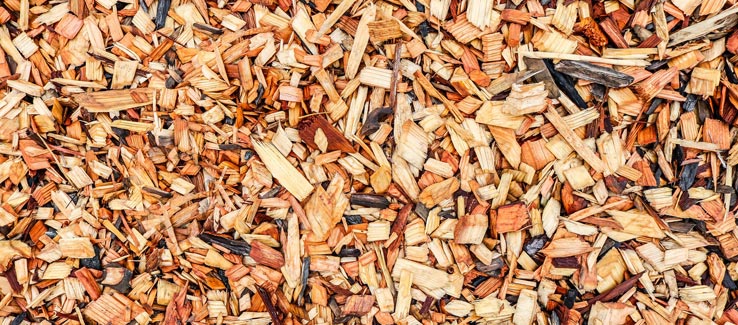
8. Pruning Plants and Shrubs – While pruning activities should take place in late winter and early spring, there is never a bad time to prune the following:
- Dead or dying foliage, leaves, and stems.
- Disease infected sections of a plant.
- Insect infested or heavily damaged sections of a plant.
- Invasive or interfering growth on sidewalks, pathways, or roads.
9. Deadheading To Encourage Stronger Growth – Deadheading is nothing more than removing faded or spent flowers. This process allows the plant to use its resources to grow stronger and in many cases continue to bloom further into the season.
10. Pest Control to Keep Your Garden Healthy – Flowering plants and shrubs will naturally invite insects and pests to your garden and landscape. Birds, bees and other pollinators, and other predators are very effective at keeping their numbers down. You can take the following steps to prevent infestations from occurring:
- Frequently inspect your garden, shrubs, and trees for signs of infestations.
- When you spot a bug problem, spray a simple solution of 2Tbsp of dish soap to 1 gallon of water to the affected area and all surrounding foliage from the top and bottom.
- Consult your local nursery. They may have current information on which pest problems are affecting your area and how to prevent an infestation.
- Keep an eye on your trees. Tree infestations can have serious ramifications on your entire landscape. When you detect an infestation or trouble with one of your trees, call a tree service to evaluate the situation and offer a course of action.
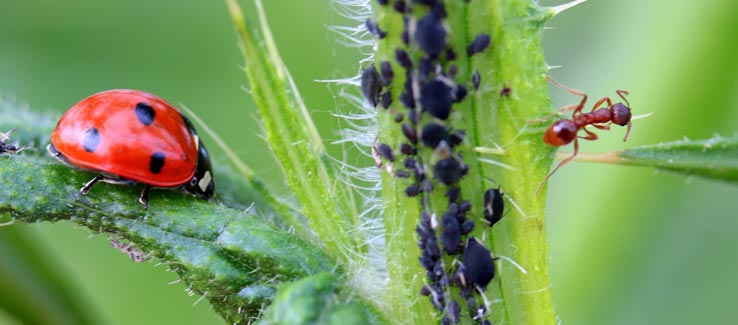
For other tips to maintain a healthy lawn during summer visit http://www.pearltrees.com/homegardeningguide/item224772263
Garden Design and Location
The design and location of your garden play a significant role in what to plant and where to plant it.
As each season rolls through, keep a journal on how well or poorly your plants did. How much sun they got, the watering schedule, infestations, diseases, the soil pH level, etc.
This information will help you determine how to adjust the soil, choose plant species, or even move the garden’s location entirely.
How ever you go about growing your garden, keep it fun. When possible, stop to smell a flower or two.
Sources:
https://www.oregonmetro.gov/tools-living/yard-and-garden/garden-problems/summer-garden-pest-control
https://kidsgardening.org/gardening-basics-preparing-the-soil/
http://www.ukgardening.org/gardening-basics.php
http://ucanr.edu/sites/gardenweb/general/
(404) 220-9965

